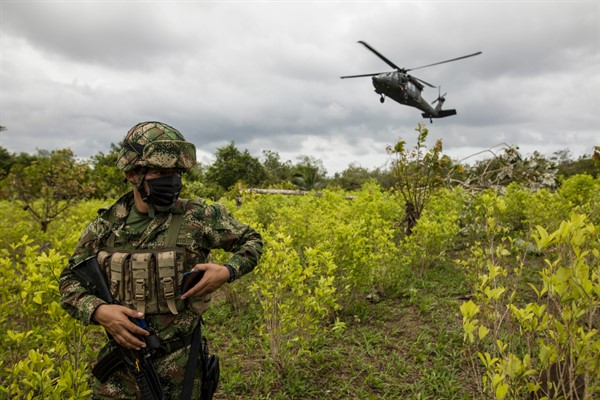If President Ivan Duque has his way, Colombia will soon resume aerial fumigation of coca plantations for the first time in over five years. It paused the spraying in 2015 due to growing health and environmental concerns over the herbicide glyphosate, which the World Health Organization classifies as a likely carcinogen. Colombian courts have subsequently set strict conditions for future fumigation. But Duque argues that booming coca crops since then are responsible for rising levels of cocaine trafficking, spurring conflict between armed groups, massacres of civilians, forced displacement and the widespread assassination of local activists and human rights defenders.
The solution, in the government’s view, is to destroy the plants that provide the base ingredient for cocaine. Since taking office in 2018, Duque has directed his security forces to undertake the largest campaign of forcible, manual coca eradication in the country’s history. Soldiers and police officers have fanned out across the country to spray pesticides at close range or rip up tens of thousands of hectares of coca plants. The prospective aerial fumigation campaign, which must still overcome regulatory and judicial hurdles, would come on top of these ongoing efforts.
However, there is little evidence to suggest that this strategy will work. In the years since the Colombian government signed the landmark 2016 peace accord with the Revolutionary Armed Forces of Colombia—the country’s largest guerrilla group, better known as the FARC—it has become increasingly clear that coca eradication is the wrong remedy for Colombia’s problems. As they have before, these policies may temporarily suppress coca cultivation levels, but they will do little to reduce the economic incentives of a crop that offers poor farmers a reliable price and guaranteed buyers.

